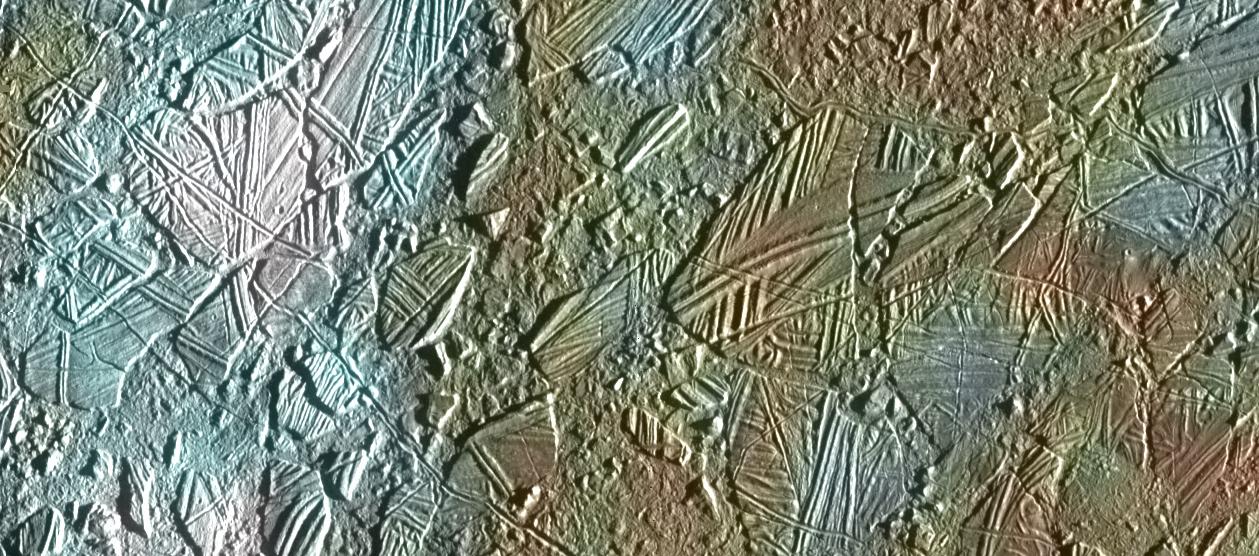
Europa – Ice Rafting
View of a small region of the thin, disrupted, ice crust in the Conamara region of Jupiter's moon Europa showing the interplay of surface color with ice structures. The white and blue colors outline areas that have been blanketed by a fine dust of ice particles ejected at the time of formation of the large (26 kilometer in diameter) crater Pwyll some 1000 kilometers to the south. A few small craters of less than 500 meters or 547 yards in diameter can be seen associated with these regions. These were probably formed, at the same time as the blanketing occurred, by large, intact, blocks of ice thrown up in the impact explosion that formed Pwyll. The unblanketed surface has a reddish brown color that has been painted by mineral contaminants carried and spread by water vapor released from below the crust when it was disrupted. The original color of the icy surface was probably a deep blue color seen in large areas elsewhere on the moon. The colors in this picture have been enhanced for visibility. North is to the top of the picture and the sun illuminates the surface from the right. The image, centered at 9 degrees north latitude and 274 degrees west longitude, covers an area approximately 70 by 30 kilometers (44 by 19 miles), and combines data taken by the Solid State Imaging (CCD) system on NASA's Galileo spacecraft during three of its orbits through the Jovian system. Low resolution color (violet, green, and infrared) data acquired in September 1996, were combined with medium resolution images from December 1996, to produce synthetic color images. These were then combined with a high resolution mosaic of images acquired on February 20th, 1997 at a resolution of 54 meters (59 yards) per picture element and at a range of 5340 kilometers (3320 miles).
- X

























